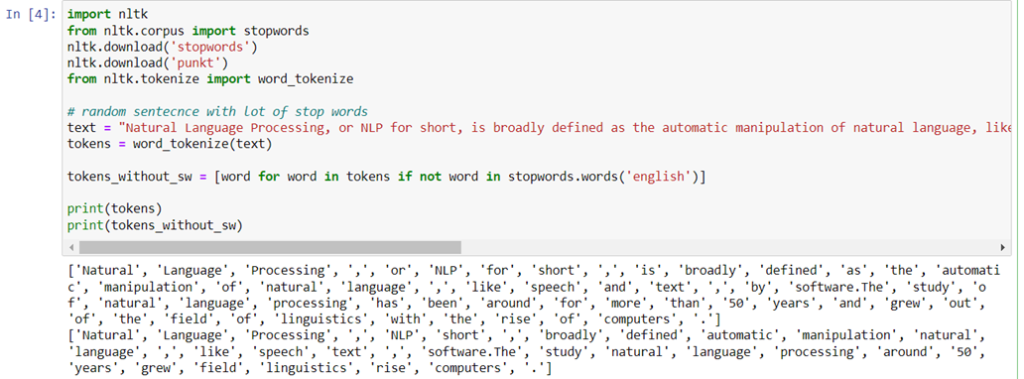What is Stop word in NLP?
 Naveen
Naveen- 3
Stop words are the most common words in any language that do not carry any meaning and are usually ignored by NLP. In English, examples of stop words are “a”, “and”, “the” and “of”. In NLP, stop words are typically removed from a text before it is processed for analysis. This is done to reduce the size of the text and to avoid irrelevant information.
Stop words can be very useful to an NLP algorithm. For example, when we want to find out what the most common word is in a sentence, we can use a stop word list to filter out the stop words and get an accurate result. The term “stop word” is derived from the idea that these words are “stop signals” for the algorithm to process.
When to remove Stop words
If we are solving such problems like text classification, sentiment analysis, then we should remove stop words as they do not provide any relevant information to our model. But if we are solving such problem like machine translation then stop words can b e useful, as they have to translated along with other words.
There is no hard and fast rule on when to remove stop words. I would suggest removing stop words if our task is one of language classification or spam filtering.
It’s best not to remove stop words when it comes to tasks. They are crucial for more complex tasks like Machine Translation, Question-Answering and Text Summarization.
How to remove stop words in python
Removing stop words can be done in many ways, but it’s fairly easy with python libraries. Let’s look at one way
NLTK library: The NLTK is a suite of libraries and programs for symbolic and statistical natural language processing in Python. It analyzes English texts. It can tokenize, parse, classify, stem and tag text. It also has various features of semantic reasoning.


You have mentioned very interesting details !
Pretty! This was a really wonderful article. Many thanks for providing this info.
Hello my family member! I wish to say that this post is awesome, nice written and come with almost all vital infos. I would like to peer more posts like this .